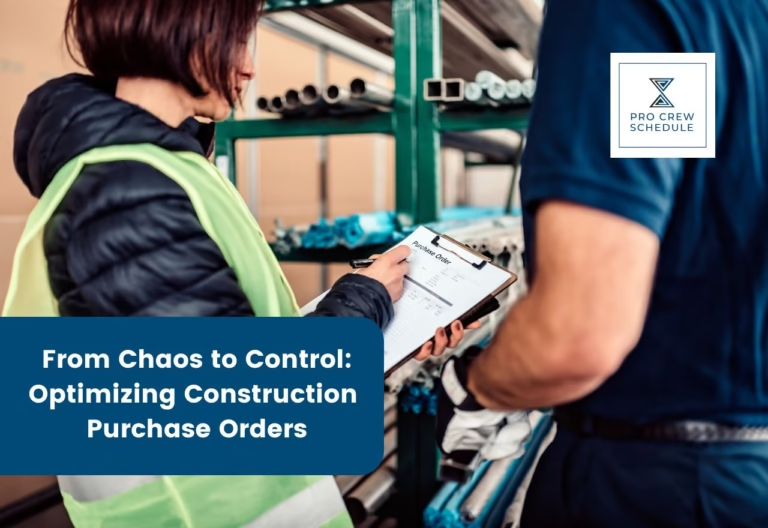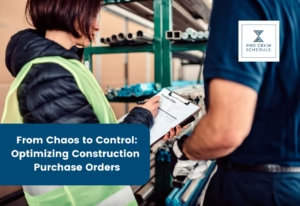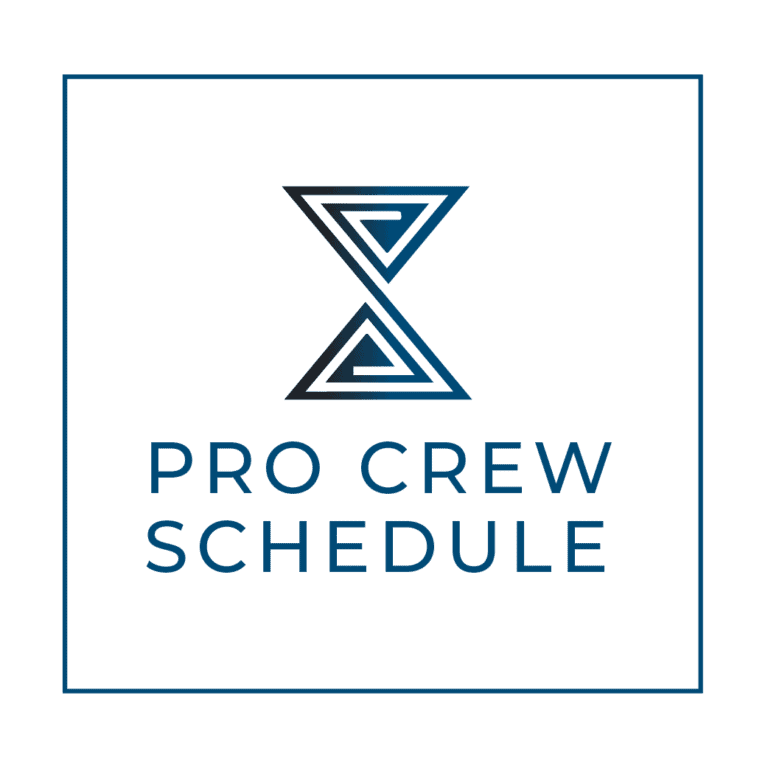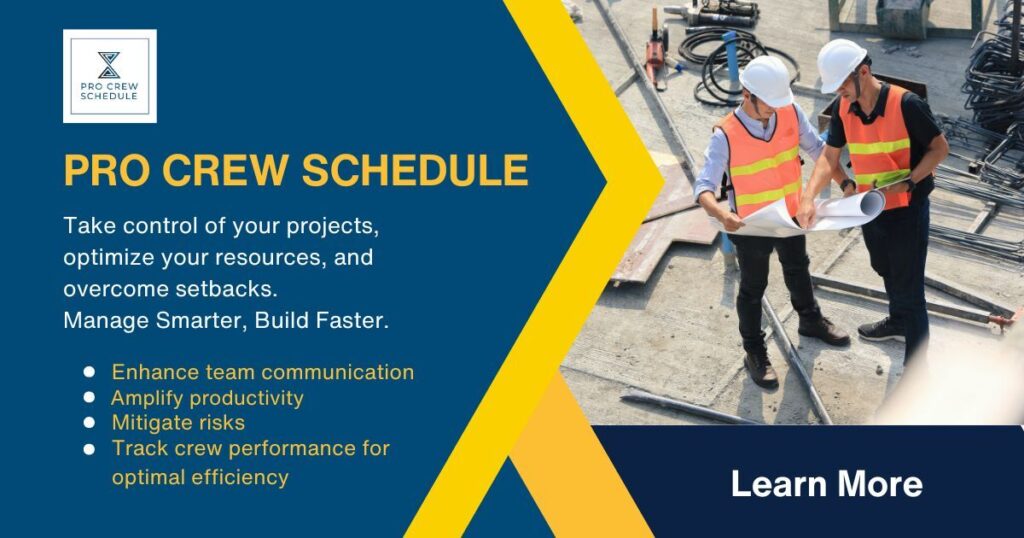In construction, a single overlooked purchase order (PO) can derail an entire schedule. One misstep—whether it’s a missing signature, incorrect delivery date, or mispriced material—can result in thousands of dollars in unplanned costs and days of lost progress.
Procurement in construction isn’t just about ordering materials; it’s also about managing the entire supply chain. It’s about managing risk, enforcing accountability, staying within budget, and keeping your vendor partnerships aligned with tight timelines. Yet, many teams still operate with fragmented systems or informal processes, which increases the likelihood of miscommunication and duplicated efforts.
This article explains how to manage construction purchase orders efficiently. We’ll dive into PO components, common pitfalls, best practices, and how tools like budgeting systems and project management tools can improve procurement accuracy and visibility.
What Is a Construction Purchase Order?
A construction purchase order is a formal document issued by a contractor or project manager to authorize and track the purchase of materials, services, or equipment. It outlines essential details, including quantities, unit pricing, delivery expectations, payment terms, and supplier information. Once the vendor accepts the PO, it becomes a legally binding contract.
In the field, a PO ensures that deliveries meet expectations regarding timing and content. Back in the office, it syncs with budgeting workflows, accounting systems, and construction inventory management software to ensure that expenditures match project estimates and delivery schedules.
Purchase Order vs. Subcontract: Key Differences
Both purchase orders and subcontracts are essential tools for controlling project expenses, but their use cases differ significantly.
A purchase order is typically used to procure tangible items—like steel beams, electrical conduit, or excavation equipment. It’s focused, itemized, and short-term.
A subcontract, by contrast, is a broader legal agreement used to engage trades or subcontractors for services. It includes the scope of work, timelines, insurance requirements, safety compliance, and payment structure.
Distinguishing between the two helps construction managers streamline documentation, improve compliance, and avoid costly overlaps.
Why POs Matter in Construction Procurement
POs are critical for preemptive cost control. They confirm that pricing has been reviewed, quantities approved, and delivery conditions verified—before any money is spent or materials are shipped.
In the field, superintendents and foremen can refer to POs to verify what’s arriving and when. In the office, project accountants track purchases against budgets, monitor cash flow, and ensure that invoices align with authorized transactions.
Without POs, teams may face delayed deliveries, budget overruns, or disputed invoices. When combined with construction crew management software, the PO process becomes more transparent, streamlined, and efficient—connecting site-level needs with back-office approvals.
What Should a Construction PO Include?
A PO must include all the essential details required to process an order and hold vendors accountable. Missing information often leads to delivery issues, vendor misunderstandings, or rejected invoices.
A well-prepared construction PO includes:
- Vendor Information: Name, tax ID, and contact details
- Project Reference: PO number, issue date, and related job number
- Itemized Description: Quantities, units of measure, specifications, unit prices, and total cost
- Delivery Information: Address, timeframe, and site-specific instructions
- Billing & Payment Terms: Who to invoice, when payments are due, and any early payment incentives
- Approval Info: Who authorized the order and when
- Additional Notes: Substitution allowances, special handling, backorder rules
When integrated into construction inventory management software, these POs automatically sync with cost codes, delivery logs, and material tracking tools, reducing manual entry and errors.
Common Types of Construction Purchase Orders
There are several types of purchase orders used in construction, each serving different project needs. A Standard Purchase Order is ideal for one-time, clearly defined purchases such as windows, plumbing fixtures, or site fencing. These orders are straightforward, with fixed pricing, specific quantities, and clearly stated delivery dates.
In contrast, a Blanket Purchase Order is best suited for recurring purchases from the same vendor over a set period. This type of PO helps reduce administrative workload and simplifies the procurement process for frequently used materials, such as fasteners, concrete mix, or general construction supplies. It offers flexibility when exact quantities fluctuate, but vendor and pricing agreements remain consistent.
Planned or Contract Purchase Orders are typically used when the budget has been approved, but the delivery timeline remains uncertain. These are common in multi-phase or long-term projects where materials are required at different stages. A planned PO allows teams to reserve funds while maintaining flexibility in scheduling. A contract PO, on the other hand, locks in pricing and terms with the vendor, with multiple releases issued as items or services are needed. When integrated with crew planning software, these purchase orders support agile scheduling and help reduce delays on dynamic, fast-paced job sites.
The PO Lifecycle: Step-by-Step Breakdown
An effective PO system ensures traceability, consistency, and accountability. Here’s how a typical process unfolds:
- Need Identification: The field team identifies material or service needs, usually based on the project schedule, daily reports, or a specific task about to begin.
- Request for Quote: Procurement or project staff request and review quotes. Vendor selection may depend on factors such as pricing, availability, or existing contract agreements.
- PO Creation: The PO is created based on the selected quote. It pulls project details, vendor information, and budget codes from integrated platforms, such as construction crew management software, to reduce manual data entry.
- Approval Workflow: The PO is submitted for internal review. Approval routing varies based on cost, category, or project type. Every action is logged for audit purposes.
- Vendor Confirmation: Once approved, the PO is sent to the vendor. They review and confirm acceptance, creating a binding agreement.
- Delivery & Verification: When materials arrive on site, the receiving team checks that they match the PO. Discrepancies are documented immediately.
- Invoice Reconciliation: Invoices are matched against the PO and delivery records. If aligned, payment proceeds. If not, the discrepancy is flagged and investigated.
Common Pitfalls in PO Management
Even with a structured system in place, purchase order errors can still occur, often leading to costly delays or strained vendor relationships. One common issue is unclear specifications—when item descriptions are vague or part numbers are missing, vendors are left to interpret the order, which increases the likelihood of incorrect or incomplete deliveries.
Another frequent problem is duplicate orders. Without proper coordination between departments, two teams may unknowingly place the same order, resulting in unnecessary spending and overstocked inventory.
Lastly, mismatched documents—such as discrepancies between the invoice, delivery slip, and purchase order—can delay payment approvals and cause frustration for suppliers. Using automation and centralized systems can significantly reduce these issues by ensuring consistency and visibility across all procurement activities.
Best Practices for Efficient PO Management
Consistent processes and centralized platforms form the backbone of effective purchase order (PO) management. To reduce risk and boost efficiency, construction teams should follow a set of well-defined best practices.
First, using standard templates ensures that all necessary information—such as vendor details, project references, and cost codes—is consistently captured across every PO. This minimizes errors and simplifies vendor communication.
Second, implementing role-based approvals helps streamline decision-making by routing POs based on criteria like project size, purchase category, or spending thresholds. This promotes accountability without slowing down workflows.
Third, it’s essential to tie each PO to specific cost codes and budgets. Doing so allows for real-time expense tracking and early detection of potential budget overruns. Lastly, teams should integrate their procurement process with construction tools, particularly those that sync with construction inventory management software and accounting systems. When procurement is connected to scheduling, budgeting, and field operations, the entire project team gains clearer visibility and tighter control over costs and timelines.
Frequently Asked Questions
- What’s the purpose of a construction PO?
It formalizes the purchase of materials or services by confirming pricing, quantities, and delivery terms. It also helps avoid unauthorized purchases or payment disputes.
- How is a PO different from a subcontract?
A PO is typically short-term, item-specific, and transactional. A subcontract covers labor or broader scopes, with legal terms and compliance requirements.
- When should I issue a blanket PO?
When ordering the same material repeatedly—like weekly drywall or monthly rebar shipments—a blanket PO reduces paperwork and secures volume pricing.
Key Takeaway: Build Smarter with Strong PO Processes
Construction purchase orders are much more than paperwork—they’re the frontline of cost control, accountability, and vendor coordination. Whether you’re ordering steel or scaffolding, using a structured PO process reduces mistakes, enforces compliance, and keeps your project on schedule and within budget.
By embedding purchase construction crew management software such as Pro Crew Schedule, you empower your teams to work smarter, reduce delays, and improve margins. With clear communication and tight controls, you can shift your focus from fixing problems to finishing projects faster and more efficiently.
Strong PO systems also create a paper trail that protects your business from legal disputes, ensures alignment between departments, and fosters long-term trust with suppliers. As projects become more complex, so does the need for transparency. A reliable PO process provides you with the visibility to confidently manage multiple vendors, timelines, and budgets, while maintaining quality standards and minimizing costly rework. In today’s competitive construction environment, smart PO management isn’t optional; it’s essential.







